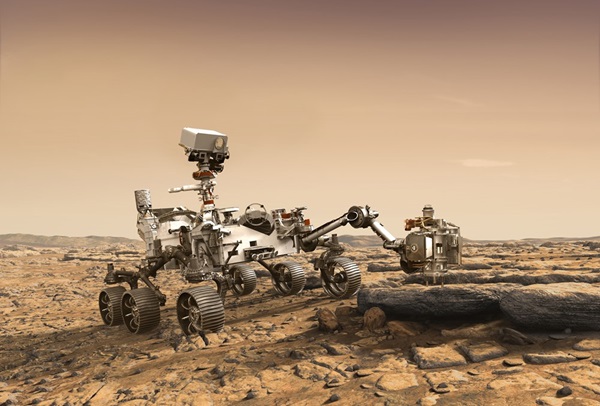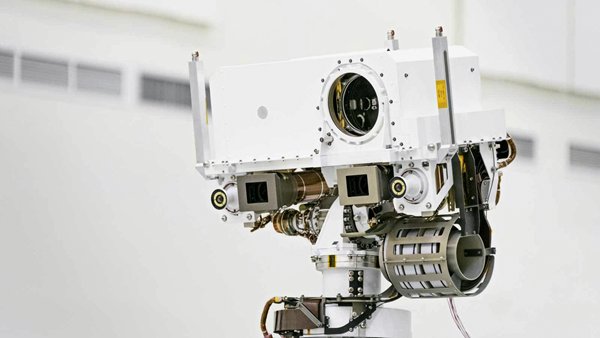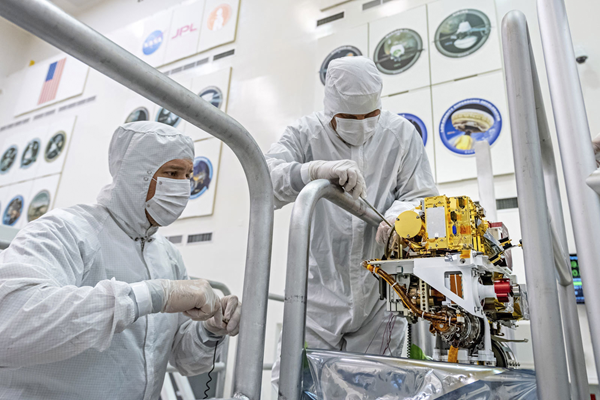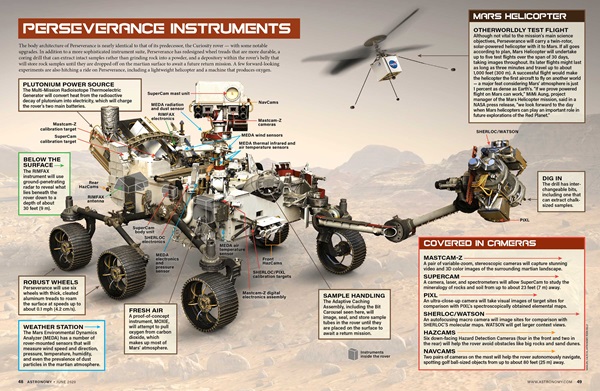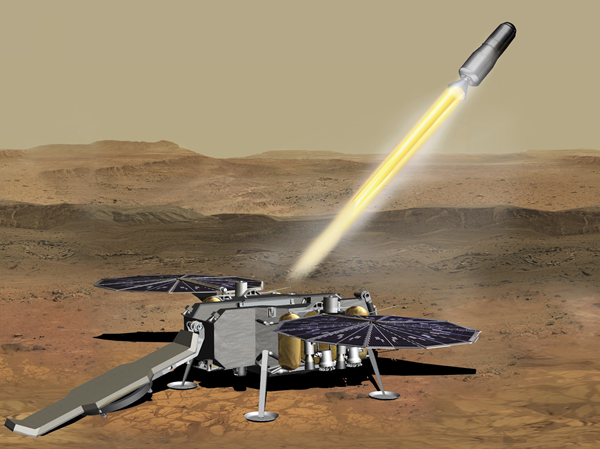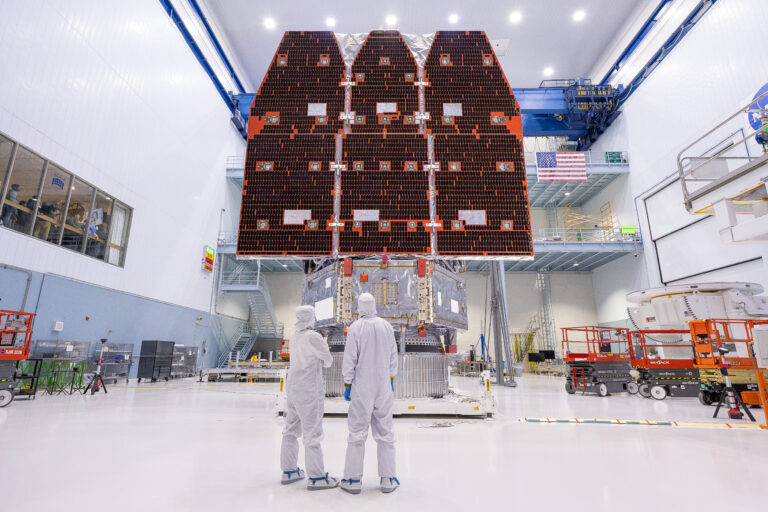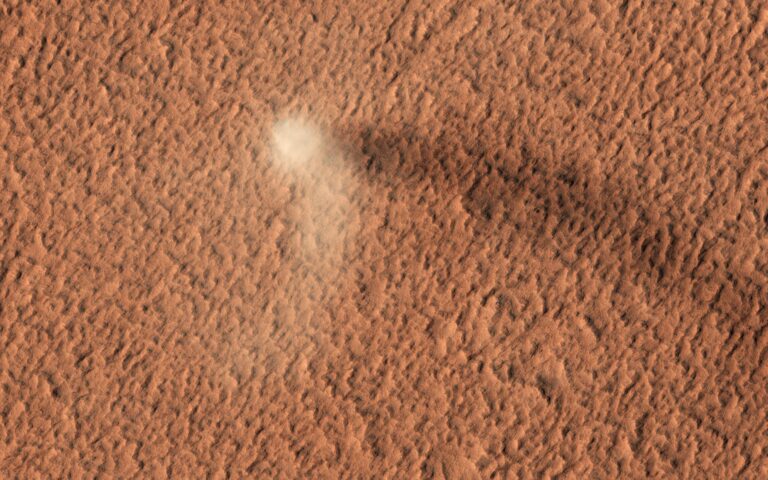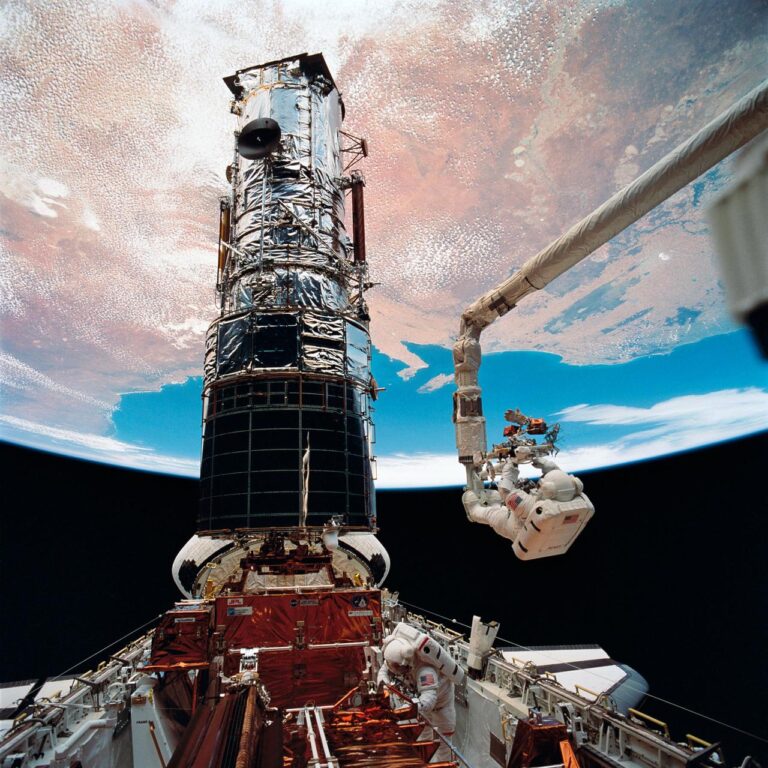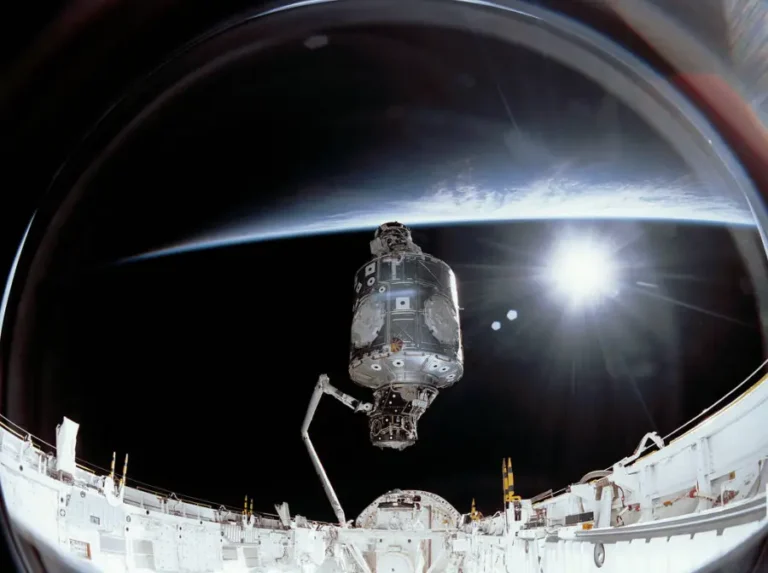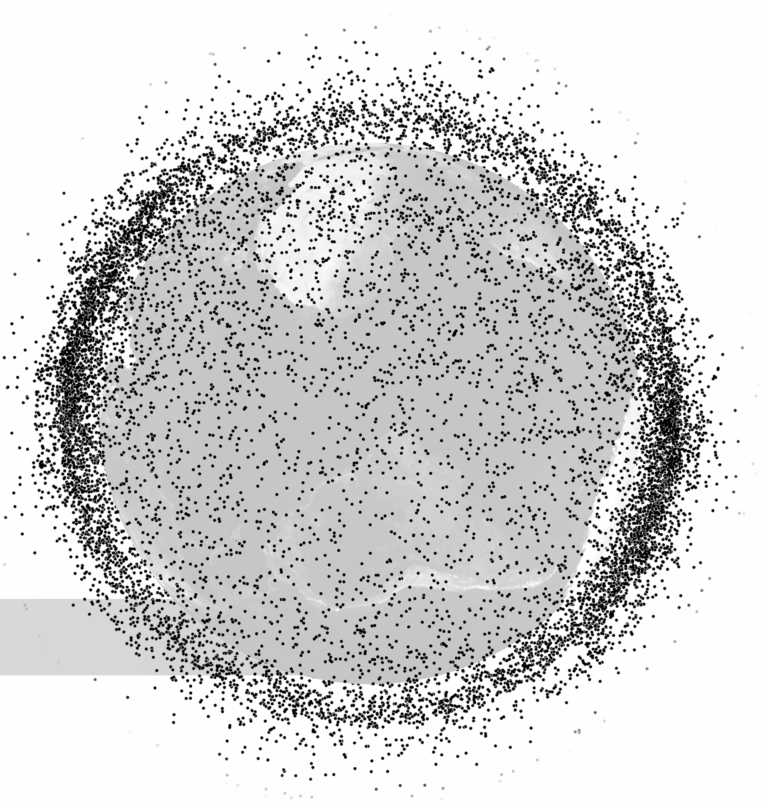Key Takeaways:
- The Perseverance rover mission, launching in July/August 2020, aims to search for signs of past microbial life in Jezero Crater, an ancient lakebed, by analyzing rocks and soil samples with onboard instruments.
- Perseverance utilizes advanced landing technologies, including Range Trigger and Terrain-Relative Navigation, to ensure a precise landing in Jezero Crater, and will record video and audio of its descent.
- The rover employs a suite of instruments, including Mastcam-Z, SuperCam, PIXL, and SHERLOC, for remote and contact analysis of Martian geology and potential biosignatures, as well as RIMFAX for subsurface investigation.
- In addition to its primary scientific objectives, Perseverance will test technologies crucial for future human exploration, such as the Mars Oxygen In-Situ Resource Utilization Experiment (MOXIE) for oxygen production and the Mars Environmental Dynamics Analyzer (MEDA) for weather monitoring.
In recent decades, scientists have seen dust devils meandering along Mars’ barren surface. They’ve uncovered reservoirs of water ice trapped at its poles and buried just below the ground. And they’ve found evidence that liquid water once existed on the now-arid planet, likely forming lakes and other bodies of water well suited for preserving ancient life — that is, if life ever existed there.
Now, it seems that every time scientists make a new discovery about Mars, the conversation shifts to: “When are we going to go there and see for ourselves?” With this upcoming Mars mission, scientists are finally taking the first steps toward humanity exploring the Red Planet in person.
Perseverance at a glance
Planned for launch between July 17 and August 5, the Perseverance rover will embark on a roughly seven-month journey to Mars, arriving February 18, 2021. And once engineers confirm it’s landed safe and sound, the rover will set to work achieving its four main objectives.
There’s plenty of overlap between this mission’s goals and those of previous rovers, but Perseverance still has a unique agenda. Namely, the rover will seek signs of past life by searching for previously habitable sites; search those sites for evidence of ancient microbes by studying rocks known to preserve life; collect and store rock cores for a future sample return mission; and help scientists prepare for the hurdles human explorers will face on Mars, partly by testing a method for pulling oxygen out of thin air.
But first, Perseverance must get to the Red Planet.
A Landing to remember
Perseverance shares a lot with the Curiosity rover, and that’s because it uses the same basic design. That’s not due to laziness; it’s part of the plan. For Perseverance, NASA is using what they call a “heritage approach,” borrowing what worked from Curiosity.
“[Perseverance] is something like 90 percent spare parts from Curiosity,” says Jim Bell, principal investigator for Perseverance’s Mastcam-Z instrument. “That’s how they got the mission approved, because they could save an enormous amount of money by using those spare parts.”
Like Curiosity, Perseverance’s landing system relies on a parachute, a descent vehicle, and a nerve-wracking sky crane maneuver that lowers the rover to the ground like Tom Cruise dropping from the ceiling in Mission: Impossible. But Perseverance also has a few new techniques that will further refine its ability to safely land at its intended dedestination: Jezero Crater.
Because rovers crawl, not zip, along the martian surface, if Perseverance misses its target, it could take weeks, months, or even a year to travel there, costing valuable mission time. To help avoid such a long commute, Perseverance’s landing suite implements a Range Trigger strategy, which autonomously chooses when to deploy the craft’s parachute. Previously, parachutes were triggered as early as possible to ensure rovers didn’t smash into the ground. But using Range Trigger, if onboard instruments determine Perseverance will overshoot its landing site, it will deploy its parachute early. If the craft will fall short, it will hold off.
Finally, as an added bonus, the descending spacecraft will record video of the parachute’s deployment, as well as audio of the rover screaming through Mars’ atmosphere, capturing sounds such as whipping winds and firing engines. By later syncing this video and audio, for the first time, we’ll see and hear exactly what a rover goes through during the infamous “seven minutes of terror” — when it slows from about 13,000 mph (21,000 km/h) to a complete stop before beaming what feels like a painfully slow OK signal back to Earth.
Jezero Crater: Exploring an ancient lake
Mission scientists selected Perseverance’s landing site, Jezero Crater, after whittling down about 60 initial options considered to be “astrobiologically relevant.” At 30 miles (49 kilometers) wide, Jezero Crater is an ancient lake and delta system located at the western edge of a giant impact basin called Isidis Planitia, just north of Mars’ equator. Within Jezero, researchers have identified many appealing sites packed with minerals like clays, carbonates, and hydrated silica, which are of great interest due to their potential to preserve signatures of past life.
“One of the fantastic and fairly unique things about Jezero is not just that it was a crater lake, but that on the [northeast side] of that crater, there’s an outlet channel,” says deputy project scientist Ken Williford. This makes Jezero what scientists call an open system. “There’s water flowing in one side and out the other side, and so it would have been a dynamic system that survived for some significant amount of time. And in that sense, it would have been a fairly stable, habitable environment,” says Williford.
If certain minerals like carbonates were crystallizing at the same time that liquid water existed near the edges of Jezero Crater, Williford says, that’s the perfect situation for forming microbial mats. “Think pond scum at the edge of a pond or a lake,” he says. “Those carbonates can entomb that pond scum — these microbial mats — and form a kind of rock that we call a stromatolite, which really just means a layered rock. But often stromatolites are fossilized microbial mats.
“Another big one is the rocks at the bottom of the delta,” Williford adds. “That stuff that we find preserved right at the bottom of that beautiful delta in Jezero — that mud — is really fantastic at concentrating and preserving organic matter. And it often does that in a way that’s homogenized and jumbled up. It doesn’t necessarily preserve those beautiful fossilized structures that you might find at the edge of the lake. But most of the rocks on Earth that are the richest in organic matter are rocks that were formed in a muddy environment.”
Although Jezero has long been on scientists’ lists of intriguing Mars sites, previous missions have deemed it too challenging to safely land there. However, with Perseverance’s improved entry, descent, and landing technology, the titillating lake and delta system are now well within the rover’s reach.
A toolbelt meant for seeking biosignatures
Perseverance is far from the first robotic explorer to assess Mars’ habitability or hunt for martian life. In 1975, NASA’s Viking program sent a pair of probes — each consisting of an orbiter and a lander — to Mars. After those landers touched down, they began carrying out experiments designed to detect active life.
“A very important distinction between [Perseverance] and Viking is that we are seeking the signs of ancient life, whereas Viking was seeking signs of what we call extant life — life that currently exists on Mars,” says Ken Williford, deputy project scientist for the Perseverance mission.
To identify the subtle markers of past life, also known as biosignatures, Williford says Perseverance will employ two main types of tools: remote-sensing instruments and contact instruments.
One vital remote-sensing instrument is the Mastcam-Z imaging system. As the rover chugs along the martian surface, it will rely on Mastcam-Z to both safely navigate and spot potentially biosignature-harboring rocks.
Located on the rover’s mast, Mastcam-Z stands about 6.5 feet (2 meters) above the martian surface, allowing it to get 360-degree views of the landscape with its two stereoscopic, zoomable eyes. Mastcam-Z is equipped with a range of filters, providing true-color vision that stretches a bit into the infrared and ultraviolet realms. This makes Mastcam-Z particularly sensitive to rocks containing water or hydrogen because, according to Bell, “different kinds of rocks and minerals reflect light differently in those wavelengths.”
Sharing the high perch with Mastcam-Z is Perseverance’s SuperCam instrument. According to Principal Investigator Roger Wiens, “SuperCam is kind of the eyes and ears and nose, if you will, of the [Perseverance] rover.” Although Mastcam-Z might be the first to identify promising sites, Wiens says SuperCam will serve as sort of an advance guard that will remotely characterize the chemistry, mineralogy, and physical properties of rock outcroppings.
SuperCam relies on a range of spectroscopic techniques to investigate targets from a distance. One such technique is called visible and infrared reflectance spectroscopy. This method is exceptionally powerful, Wiens says, because it’s a passive technique that only uses sunlight to distinguish between clays, carbonates, sulfates, silicates, phosphates, and other minerals from a great distance. “Really, it can go as far as you can see,” he says, “and so when visibility is good on Mars, then it could be kilometers.”
SuperCam also will utilize a technique called Laser-Induced Breakdown Spectroscopy (LIBS), which uses a 1,064-nanometer laser to study targets as small as a pencil point from up to about 23 feet (7 m) away. The basic idea of LIBS is that “you just need to blast the rock, and then you need to see the color spectrum of the material that you just blasted,” says Wiens. The first few laser shots — each powerful enough to light about a million lightbulbs but lasting just 4 billionths of a second — create a tiny shock wave that removes any dust from the rock’s surface, he says, providing a clear view of the target. After removing dust, additional shots vaporize pieces of rock, creating a plasma. By analyzing the specific colors of light present in this plasma, SuperCam can get an idea of what the rock is made of.
Once Mastcam-Z and SuperCam identify a promising target, the rover will trundle over to the target to take a closer look with two contact tools mounted to its robotic arm: the Planetary Instrument for X-ray Lithochemistry (PIXL) and the Scanning Habitable Environments with Raman & Luminescence for Organics & Chemicals (SHERLOC).
Before PIXL and SHERLOC begin collecting data up close, the rover will use an abrading drill bit to flatten a small, circular spot on a target rock about 1.5 inches (4 centimeters) wide, Williford said in a presentation at the Jet Propulsion Laboratory. It’s almost like preparing a slide for analysis with a microscope. But because this creates a lot of dust, the rover’s turret also includes the Gaseous Dust Removal Tool, which shoots puffs of ultra-pure nitrogen that will help clear away any debris generated during the abrading process. After that, the site’s ready for up-close inspection with PIXL and SHERLOC.
The PIXL instrument has an X-ray fluorescence spectrometer that reveals the specific elements embedded within a rock. “X-ray fluorescence is a technique that is considered to be the gold standard of measuring [the elemental] chemistry of rocks,” says Abigail Allwood, principal investigator of PIXL. “But having said that, it’s usually done in bulk.”
Sharing Perseverance’s turret is SHERLOC, a laser-based tool that likewise scans rocks, but uses an ultraviolet beam about as wide as PIXL’s X-ray beam. Unlike PIXL, SHERLOC charts the molecular composition of rocks using multiple spectroscopic methods. This allows researchers to map the specific locations of minerals and organic matter that are commonly associated with life.
“We are very sensitive to any minerals or mineralogy or chemistry that was done in an aqueous environment,” says Luther Beegle, principal investigator of SHERLOC. “So a lot of the stuff we talk about looking at — phyllosilicates, clays, gypsum, things like that — are all associated with liquid water.” Because scientists understand how these minerals are formed, he says, SHERLOC can help researchers rewind the clock to better understand what the varied environments within Jezero Crater were like billions of years ago.
But where would SHERLOC be without WATSON (the Wide Angle Topographic Sensor for Operations and eNgineering)? According to Beegle, this subsystem of SHERLOC captures visual images of target areas to provide more context for these sites, complementing PIXL’s elemental maps and SHERLOC’s molecular maps.
But these aren’t the only tools Perseverance has in its sophisticated toolbelt. The rover also includes a gadget that will dramatically help researchers characterize the geology and past habitability of Mars, aiding in their search for ancient biosignatures.
After Mastcam-Z and SuperCam look around the landscape in search of notable features, but before PIXL and SHERLOC come into play, Perseverance will deploy its Radar Imager for Mars’ subsurFAce eXperiment (RIMFAX) — the very first ground-penetrating radar tool ever sent to the martian surface.
This pioneering instrument will reveal buried features, such as ancient lava flows or sand dunes, that will help researchers weave together a more comprehensive history of Mars’ past habitability, helping them hunt for ancient life. Furthermore, thanks to RIMFAX’s ability to detect water, ice, or salty brine buried at a depth of more than 33 feet (10 m), scientists can pinpoint locations rich in natural resources that might one day be tapped by human explorers.
With all these tools (and more) at its disposal, Perseverance is better suited to find evidence of ancient martian life than any of its predecessors. But perhaps what makes this mission most intriguing is not what we can learn from the rover’s onboard tools, but rather what we can eventually learn from its thoughtfully curated collection of samples, which scientists plan to eventually ship back to Earth.
The lineage of NASA’s Mars rovers
The first rover to successfully operate on Mars’ surface was NASA’s small, 23-pound (10.6 kilogram) rover named Sojourner. As part of the Pathfinder mission, Sojourner landed in Mars’ Ares Vallis on July 4, 1997 — and it instantly captivated the world.
According to an article by Brian Dunbar titled “The day the internet stood still,” on the first workday after Pathfinder deployed Sojourner, the rover’s webpage on the Jet Propulsion Laboratory’s site got 80 million hits. This was an astonishing number at the time — and remains so now — as the still-burgeoning internet was not nearly as ubiquitous as it is today. For comparison, the previous year, the Atlanta Olympics website maxed out at 18 million hits in a day.
In January 2004, NASA landed two more “robotic geologists,” named Spirit and Opportunity, on the Red Planet. These identical, 408-pound (185 kg) rovers landed by bouncing their way along Mars’ surface encased in airbags that deflated after they came to complete stops — with Spirit landing in Gusev Crater and Opportunity in Meridiani Planum. Both rovers performed exceptionally well, beaming back hundreds of thousands of high-resolution color images, as well as microscopic images. Though Spirit died in 2010, six years after landing, Opportunity kept chugging along until a global dust storm encased the Red Planet in 2018, leading NASA to cease its revival efforts in early 2019.
Improving on the success of previous rovers, NASA landed its largest and most sophisticated rover, Curiosity, in Mars’ Gale Crater on August 6, 2012. Because the car-sized, nearly 2,000-pound (900 kg) rover is so meticulously designed, NASA chose to softly set it down on the surface using a sky crane maneuver. Since its landing, Curiosity has been exploring the Red Planet’s past habitability by taking well over half a million images and videos, roaming more than 13.5 miles (21.8 km), and drilling holes to collect samples for onboard analysis.
There and back again: Caching samples
After analyzing favorable sites with onboard instruments, Perseverance will use its rotary percussive drill to gather rock cores that scientists hope to study up close in the near future. But before the rover begins digging, Perseverance will snag one of 43 titanium sample tubes housed in its body and insert it into its drill. The action of digging will force a cylindrical core — roughly the size of a piece of chalk — into the tube within the drill bit. Then, the sample will be imaged by an internal camera, hermetically sealed, and stored in the rover’s body until a batch is ready for drop-off.
Perseverance will also carry five witness tubes that will not hold rock samples. Instead, they’ll be exposed to the environment around the collection site to trap contaminants from the rover or its propulsion system that might pollute the rock samples. As the mission progresses, the rover will deposit groups of sealed sample tubes at “sample cache depots” on the martian surface. There, they’ll patiently await their next ride.
Although the specifics of a return mission are still nebulous, the basic idea is that a future spacecraft will land on Mars and deploy a small rover to collect the cached cores that Perseverance will leave behind. This worker-bee rover will load the samples into a small rocket (tentatively called a Mars Ascent Vehicle), which will blast them into martian orbit. There, they’ll be handed off to an orbiting spacecraft for return to Earth.
Finally, NASA will divvy up and distribute the samples to science labs around the world. Over the ensuing decades, Williford says, researchers will scrutinize the samples with the most sophisticated instruments on Earth (as well as some instruments that haven’t been invented yet) therefore “maximizing our ability to detect signs of ancient life or extremely subtle signs of planetary evolution.” And based on what we’ve learned from analyzing the Apollo lunar samples in Earth-based labs, getting our hands on intact Mars samples would teach us much more than any rover-mounted instruments ever could.
This is one of the most important aspects of the mission, Williford says. “I think without the intention to return samples, there would probably not be a [Perseverance] mission.”
Preparing for humans
Despite the recent focus on the Artemis program, which aims to send humans back to the Moon within the decade, many of those working on Perseverance aren’t too concerned with the prospect of the Moon trumping their goal of sending humans to Mars. And because of their steadfast belief that humanity will eventually make it to the Red Planet, they’re taking the pragmatic approach and doing some basic prep work. “The more we know about Mars,” Williford says, “the better prepared we are to send humans there and get them home safely.”
For example, one thing that’s part of everyday life on Earth and will likewise be needed on Mars is the weather report. That’s where the Mars Environmental Dynamics Analyzer (MEDA) comes into play; it’s essentially an extraterrestrial weather station.
MEDA is designed to wake up about once an hour throughout the mission to record data on six different weather-related factors: atmospheric pressure, relative humidity, wind speed and direction, and air and ground temperature. Additionally, MEDA will monitor dust in the martian atmosphere, as well as ambient radiation levels. By collecting this data, “MEDA will help prepare for human exploration by providing daily weather reports and information on the radiation and wind patterns on Mars,” said Jose Rodriguez Manfredi, principal investigator of the MEDA instrument, in a NASA statement.
“Everything on [Perseverance] is on there for a reason. It’s not just on there because we thought, ‘Wouldn’t it be cool to send spacesuit material,’ ” Beegle says. “But we wanted — we needed — a Teflon target and we realized that Teflon is part of the spacesuit material. So, let’s do that. Let’s kill two birds with one stone.”
By keeping spacesuit samples mounted to Perseverance and exposing them to the martian atmosphere the entire time, researchers will get a bonus experiment that tests how spacesuits degrade after being exposed to the martian elements for years.
Then there’s the Mars Oxygen In-Situ Resource Utilization Experiment (MOXIE), one of the first experiments designed to test the extraterrestrial production of something we’ll need to survive on (and return from) Mars. Its mission: plucking oxygen from the martian atmosphere.
One day we might harvest oxygen from water ice already trapped in Mars’ poles, says Michael Hecht, MOXIE’s principal investigator. But in the short term, “the thing that’s really easy to do is be an electronic tree,” he says. “What does a tree do? It takes in [carbon dioxide]; it puts out oxygen.”
MOXIE will use electricity to break apart carbon dioxide molecules — which make up about 96 percent of Mars’ thin atmosphere — into carbon monoxide and oxygen. However, MOXIE needs to be careful not to push the electrolysis-based process too far, which would knock lone carbon atoms from the carbon monoxide molecules. The danger of this is that carbon is very difficult to deal with, Hecht says. “Carbon is actually how you destroy these [mechanical] systems, because the carbon builds up and they stop working.”
Even if MOXIE can avoid getting gunked up with excess carbon, it’s still just a proof-of-concept experiment that will need to be dramatically scaled up — by hundreds of times — before any crewed missions venture to Mars. When it is running, which will likely only be about once a month, Hecht says MOXIE might be able to produce around 10 grams of oxygen per hour, but it’ll probably be closer to 6 g. (For reference, humans need about 20 g of oxygen per hour to breathe.) But breathable oxygen is just a small part of the larger battle.
Beyond creating breathable oxygen and rocket propellant, another intriguing aspect of MOXIE is that it will help researchers learn how to harness the full power of extraterrestrial electrochemistry. According to Hecht, if humans eventually gain access to water on Mars (so there’s a reliable source of hydrogen), scientists can tweak MOXIE’s basic technology to make much more complicated products. “Once you have water and you have electrochemistry,” he says, “you can start making anything from paraffin to beer.”
Baby steps to Mars
Although a martian microbrew sounds delicious, it’s not going to happen anytime soon.
Instead, myriad researchers, engineers, organizations, companies, and national space agencies must continue to make countless small steps that each bring humankind a little closer to a reality where people exist on Mars. According to Hecht, MOXIE, as well as the entire Perseverance mission, “is the result of many, many hands” working in tandem. And we’ll surely need all hands on deck if we want to become a multi-planetary species.
Until then, by characterizing the weather, locating buried resources, and producing oxygen from thin air, Perseverance is taking the first baby steps toward a crewed Mars mission on our behalf. In addition to seeking the signs of ancient martian microbes, the ambitious rover is paving the way to a future where life — maybe not for the first time — exists on the Red Planet.

